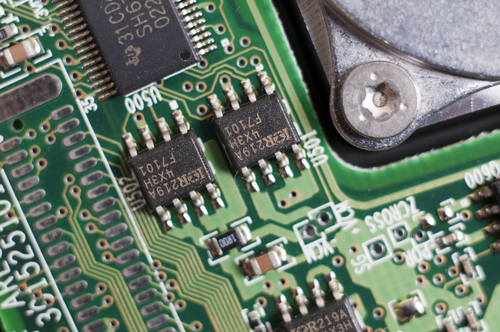Share

In the second of our business leader guest posts, Richard Kirk, Product Manager for Single Board Computers, shares some insights on the VME form factor.
Ever since GE announced the first 3U VPX single board computer in May 2006 (the SBC340) our customers have been asking me, “Is VME dead?” They were asking it again when the OpenVPX industry working group—of which GE was a founding member—was formed in January 2009. They’ve been asking us the same question every year since—and they’re asking it again today.
Why is that? Because those customers with their ear to the ground know that IDT’s TSI148 VME bridge is going end of life (EOL) in mid-2015. The TSI148 is at the heart of virtually every modern VME board, translating on-board PCI/PCI Express signals to off-board VME signals. It provides a pretty essential function.
It does remind me, though, how the mil/aero market—in terms of embedded computing technology—is driven by the realities of the commercial silicon world. That has its upsides, with leading edge devices from the likes of Intel and NVIDIA, and serial switched fabrics like InfiniBand and PCIExpress—technologies that have transformed mil/aero embedded computing. But: it has its downsides—as is the case with the TSI148 going EOL. Without the commercial market for VME, which I’m seeing move away toward Computer- on-Modules, it’s no longer commercially viable to design an open market replacement.
Here at GE, though, we’re probably better placed than most to respond. We’ve built a business around our ability to support long-term—often multi-decade—programs. No one understands better than GE the impact of obsolescence—or how to deal with it. Our customers regularly turn to us for advice and support.
Still in demand
Many of the customers I talk to have a significant investment in VME. Those programs that have VME at their heart were almost always planned to be long term programs—but, with the advent of sequestration and the cut-backs in military spending, many of them will need to be maintained and upgraded for even longer than first planned.
But although VME has been at the heart of mil/aero embedded computing since well before the time of the Perry memorandum, it’s not just existing programs that are looking to VME either. New programs that are less concerned with high performance, and more concerned with minimal learning curve, low risk and low cost are still turning to VME and the extensive infrastructure of hardware, software and expertise that support it.
At GE, we know that it’s incumbent on us to come up with the answers to ensure that VME remains a viable option as long as our customers want it to be. My team have been looking at this long and hard, and we see three possible ways forward.
Three options
- Securing TSI148 silicon. That, of course, has great attraction—and would be a no-brainer if the TSI148 was a $5 part. However, it’s very far from a $5 part—so buying all the TSI148s we might ever need is commercially daunting.
- Adopt the Universe VME bridge, which is a well-proven solution. That’s a fairly straightforward replacement, although it would involve a board re-design—but the downside is that it doesn’t provide support for the 2eSST (double-edged source-synchronous transfer) protocol, meaning that it’s lower bandwidth. That may not be significant, though, as customers and programs needing high bandwidth and high performance have mostly transitioned to VPX.
- Use an FPGA that replicates the functionality and performance of the TSI148. That’s eminently doable, although it would require the investment of time and effort.
We haven’t come to any conclusions yet, although it looks increasingly as if we will adopt a classic obsolescence mitigation strategy and move forward on all three fronts.
At GE, VME is in safe hands. Our customers have trusted us for many years to maintain the value of their investments—and that’s a trust that we plan to continue to respect and respond to. The team and I plan to continue to develop and deliver VME boards that give our customers access to the latest technologies as and when they become available. The TSI148 going EOL is, in the grand scheme of things, a minor perturbation. It’s a fact of life in our business, and one we’re well used to dealing with.
To adapt Mark Twain’s quote: “Rumors of VME’s death have been greatly exaggerated.”

